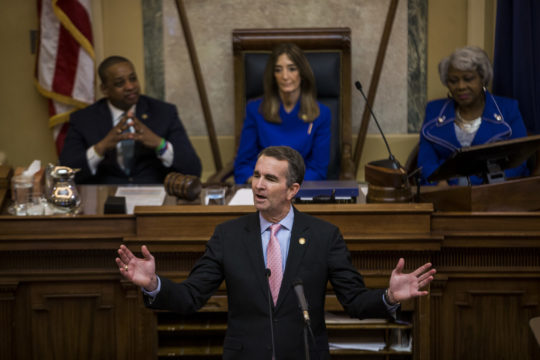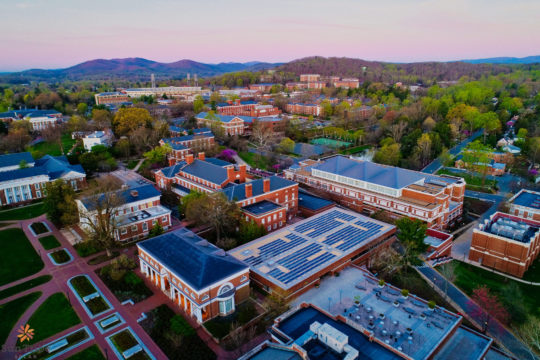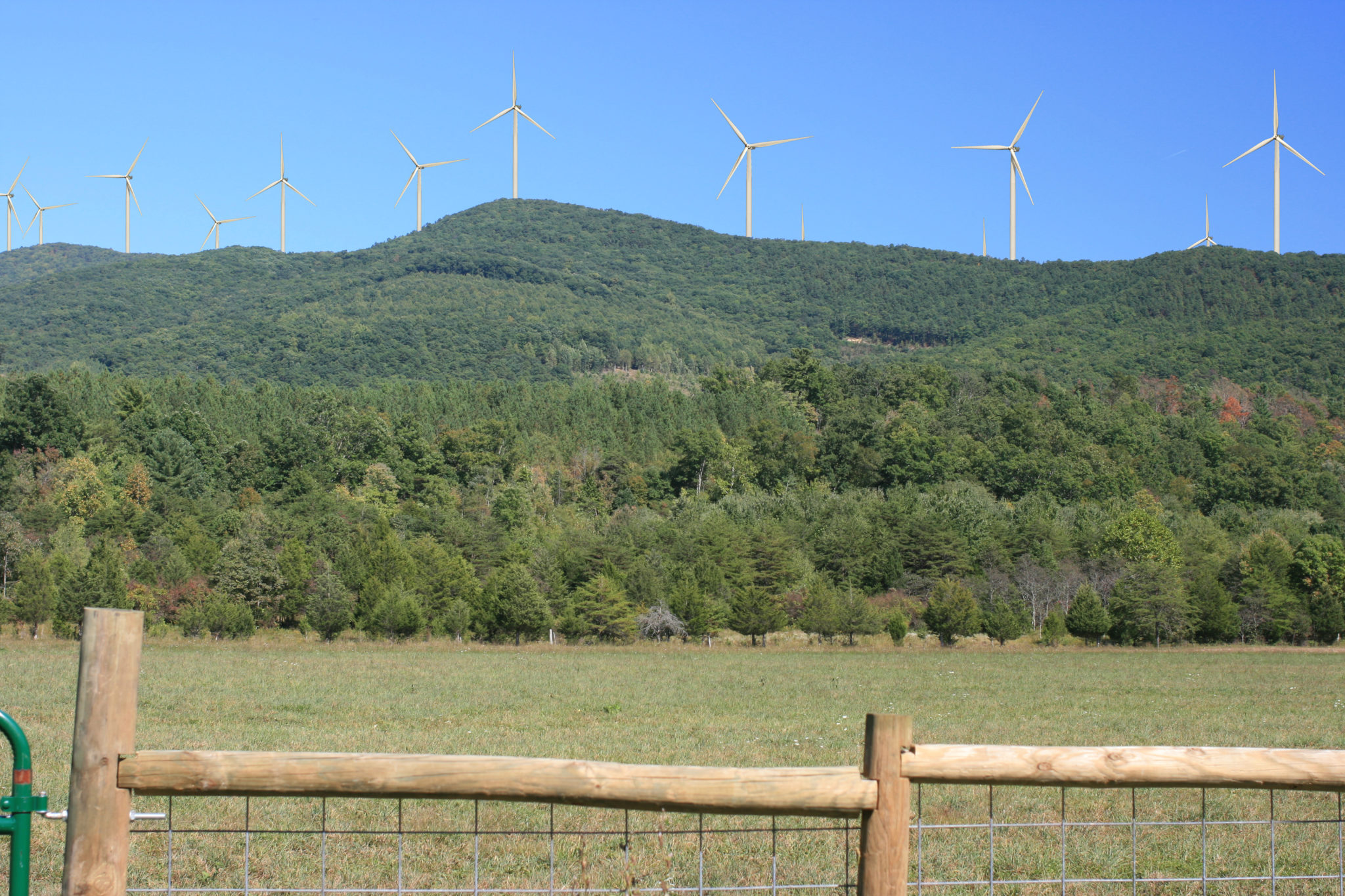Leading the Shift to Renewable Energy in Our Home State
The Commonwealth of Virginia Embraces Wind and Solar
To the average electricity bill payer, the clean energy transition has long been associated with environmental groups and images of the 1980s-era turbines in Palm Springs. The good news? That correlation is rapidly shifting to reflect a sweeping new reality, featuring hundreds of leading companies committing to 100% renewable energy as well as states and utilities setting aggressive carbon-related goals.
Virginia, home to the headquarters of Apex Clean Energy, is helping lead the way.
During one week in 2019—climate week—the collective capacity of corporate clean energy deals announced was more than those signed during every other quarter in history.
Between strong wind and solar resources and a growing demand for clean energy from the state government, major corporations, and consumers, the clean energy revolution is no longer a “West Coast, Best Coast” trend. Since mid-2019, the Commonwealth of Virginia—formerly one of the largest coal-producing states in the country—has set ambitious carbon-free energy goals and taken significant strides toward achieving those targets.
Virginia has committed to power 30 percent of its electric grid with carbon-free electricity by 2030 and 100 percent by 2050. Leading by example, the state government plans to procure at least 30 percent of the electricity consumed by its agencies and executive branch from renewable sources by 2022—and here’s where Apex comes in.

The Commonwealth will purchase the output of the state’s first-ever onshore wind farm, Apex’s Rocky Forge, when it begins operations in 2021. The historic agreement to buy 75 MW of power from the Botetourt County project marks the largest state contract for renewable energy in the entire country.
Virginia’s public universities are following suit, with both the College of William & Mary and the University of Virginia announcing aggressive goals to reach carbon neutrality by 2030.
And all throughout the state, the private sector is making tangible progress on corporate clean energy and sustainability targets.
The Pace of Change Continues to Quicken
U.S. corporate procurement of renewable energy continues to grow exponentially.
During one week in the fall of 2019—Climate Week—the collective capacity of corporate clean energy deals announced was more than those signed during every other quarter in history. This seven-day barrage of announcements broke records, but the underlying trend had long been under way and is still playing out.

(Skyclad Aerial)
Demand in Apex’s home state of Virginia is no exception. In November, Apex’s Altavista Solar executed a power purchase agreement with Facebook for a 61.6 MW portion of the project. Altavista will become the first solar energy project in Campbell County when it becomes operational in 2020.
All this demand—from the Commonwealth to corporates to colleges—raises questions: How do we get there? How do these entities meet their near-term goals?
Apex is helping bridge the gap, with more than $1 billion worth of renewable projects in Virginia, representing over 1 GW of clean energy—the equivalent of powering nearly 215,000 average U.S. homes.
And there’s more positive news for purchasers of clean energy—the communities across the Old Dominion where projects are sited are welcoming wind and solar with open arms. For localities, renewable energy projects bring significant tax revenue, reliable payments for host landowners, short- and long-term job opportunities, and oftentimes unparalleled investment.
Altavista, which was embraced wholeheartedly by the Campbell County community, received a unanimous vote of approval from the county’s board of supervisors. The project will generate 200 jobs during construction and over $1.8 million in local tax revenue over the project’s lifetime. In a county where the population tops off at 55,000, it’s easy to understand the attraction of such an investment.
Virginia Is a Top 20 State for Solar
With approximately 1 GW of installed solar, another 4 GW projected to be added over the next half decade, and its first wind energy project on the horizon, the Commonwealth is poised to meet its ambitious clean energy goals.
[/vc_column_text][animated_icons_with_text columns=”three_columns”][animated_icon_with_text title_tag=”h4″ icon=”fa-lightbulb-o” title=”Capacity Installed” text=”1 GW” size=”25″ icon_color=”#3c3c3d” icon_background_color=”#e2e3e2″ icon_color_hover=”#ffc907″ icon_background_color_hover=”#c45334″][animated_icon_with_text title_tag=”h4″ icon=”fa-home” title=”Homes Powered” text=”100,000″ size=”25″ icon_color=”#3c3c3d” icon_background_color=”#e2e3e2″ icon_color_hover=”#c1559b” icon_background_color_hover=”#452771″][animated_icon_with_text title_tag=”h4″ icon=”fa-building” title=”Solar Companies” text=”300″ size=”25″ icon_color=”#3c3c3d” icon_background_color=”#e2e3e2″ icon_color_hover=”#63cae1″ icon_background_color_hover=”#0072b5″][/animated_icons_with_text][animated_icons_with_text columns=”three_columns”][animated_icon_with_text title_tag=”h4″ icon=”fa-money” title=”Total Invested” text=”$1 billion” size=”25″ icon_color=”#3c3c3d” icon_background_color=”#e2e3e2″ icon_color_hover=”#8dc640″ icon_background_color_hover=”#3c3c3d”][animated_icon_with_text title_tag=”h4″ icon=”fa-wrench” title=”Jobs” text=”4,500″ size=”25″ icon_color=”#3c3c3d” icon_background_color=”#e2e3e2″ icon_color_hover=”#3c3c3d” icon_background_color_hover=”#63cae1″][animated_icon_with_text title_tag=”h5″ icon=”fa-book” title=”Data source” text=”SEIA.org” size=”25″ icon_color=”#3c3c3d” icon_background_color=”#e2e3e2″ icon_color_hover=”#3c3c3d” icon_background_color_hover=”#63cae1″][/animated_icons_with_text][vc_column_text]
Numbers are approximate.
[/vc_column_text][vc_separator type=”normal” color=”#c45334″ thickness=”1″ down=”30″][vc_column_text css=”.vc_custom_1585749705236{padding-right: 50px !important;}”]About a three-hour drive away, in Gloucester County, Carvers Creek Solar offers a new source of economic development and significant tax revenues. And in Charlotte County, the board of supervisors voted 7–0 to approve Moody Creek Solar, a 150 MW project that will also generate millions of dollars in tax revenue. Income from the project will help fund the development and upgrading of a UHF Public Safety Communications System—an infrastructure advancement that improves emergency services benefits citizens across the entire county.
These projects represent just the starting point for clean energy in Virginia. Apex alone is also developing the 150 MW Pinewood Wind, 130 MW Red Brick Solar, 150 MW Riverstone Solar, and 12.5 MW Rivanna Solar projects—the latter only minutes from Apex’s headquarters and the recipient of another unanimous vote of approval.
All around the country, the hard work to build tomorrow’s carbon-free energy supply is happening largely out of sight. This change is happening gradually, but one day soon, our nation will wake up to an entirely new reality. With Virginia as an example, wind and solar can lead the decarbonization of the U.S. electric grid—one project, one community, and one state at a time.


